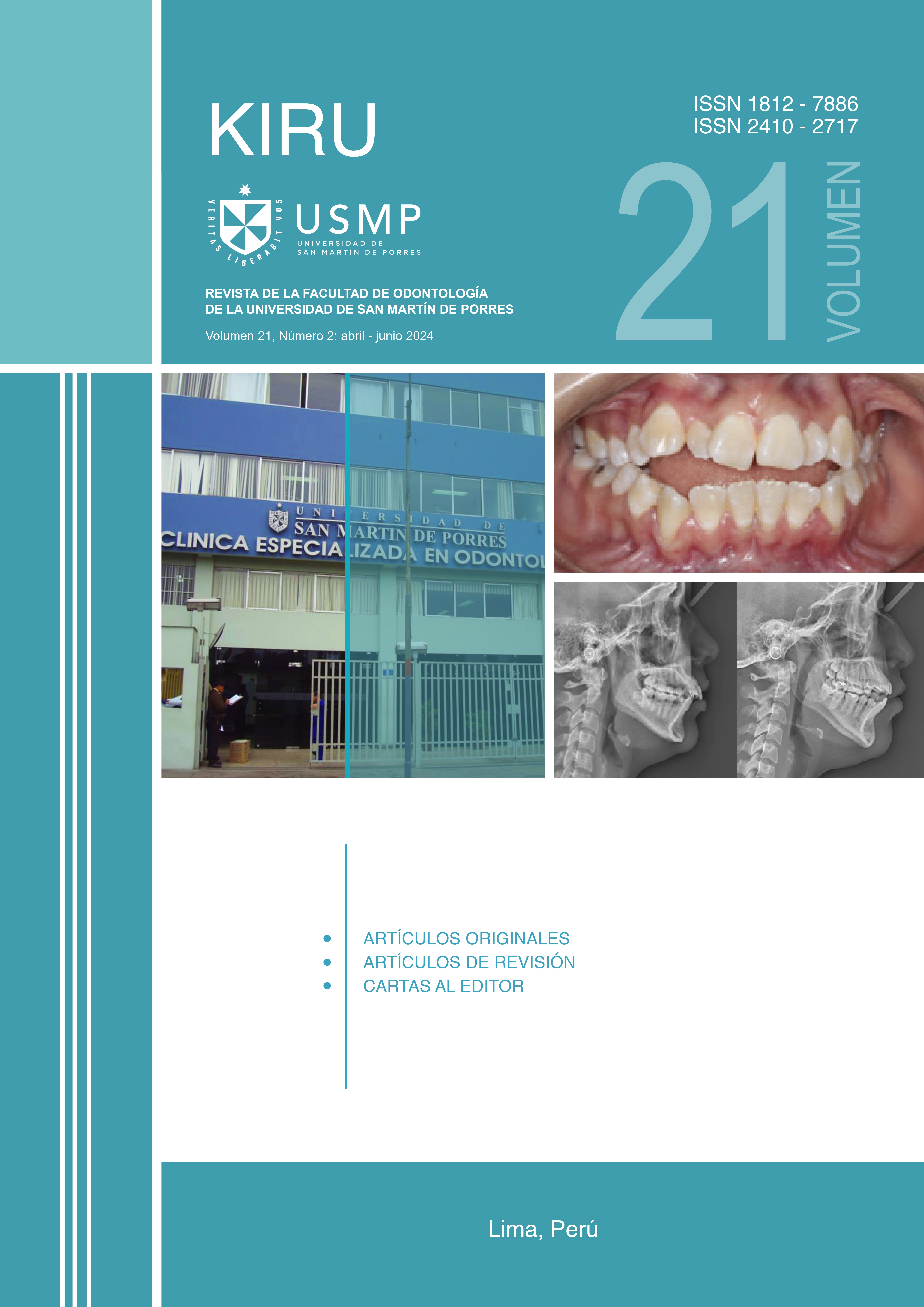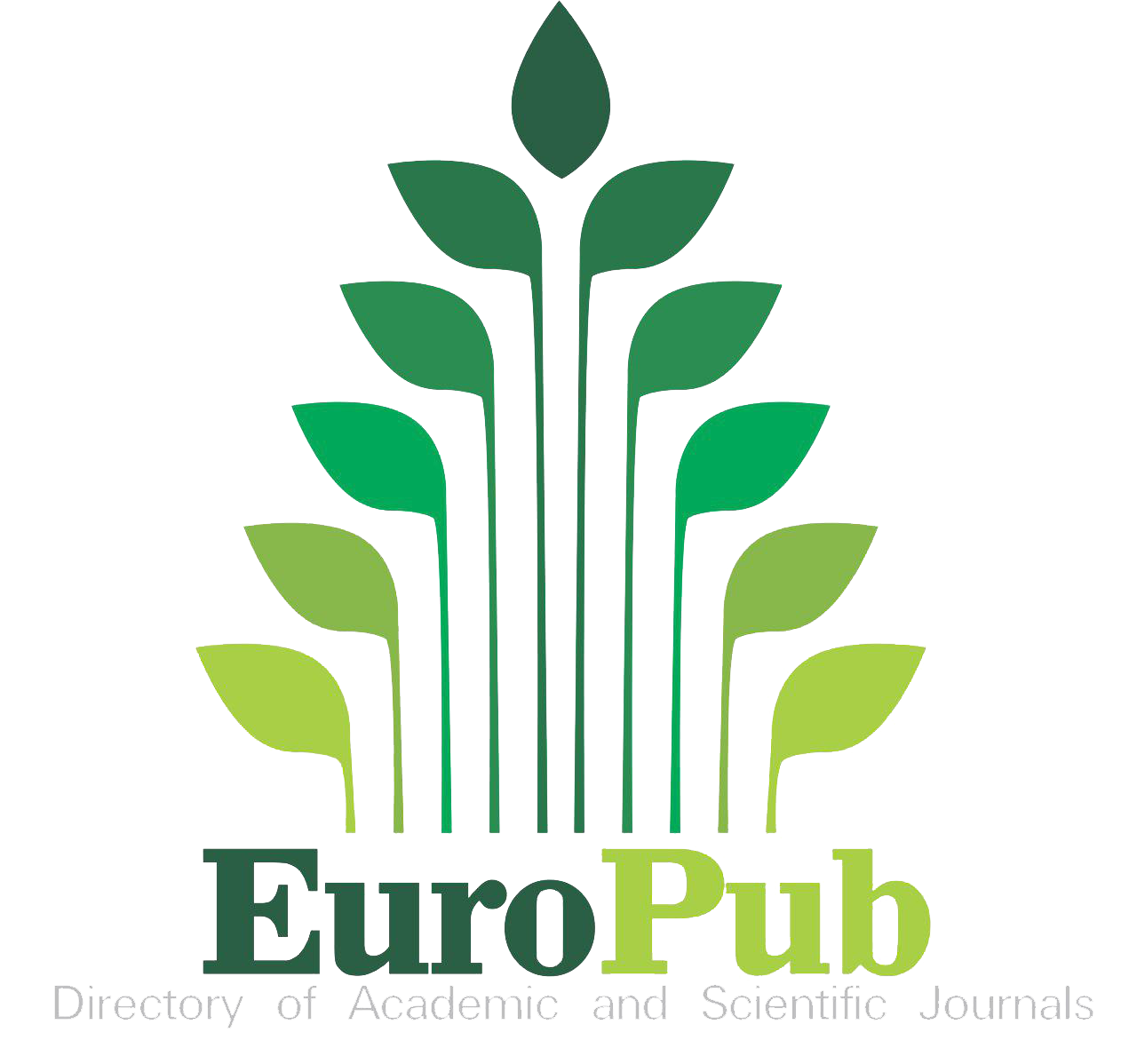Fitoquímica de la Camellia sinensis o té verde: una actualidad
DOI:
https://doi.org/10.24265/kiru.2024.v21n2.04Palabras clave:
Té verde; Camellia sinensis; Química; AntioxidantesResumen
El té verde o Camellia sinensis, es una forma de té sin fermentar que contiene la sustancia natural de las hojas frescas; y es considerada como la segunda bebida más popular del mundo después del agua. En esta revisión se estudió la fitoquímica del té verde de manera exhaustiva; pues muestra actividades farmacológicas antioxidantes, anticancerígenas, hipoglucemiantes, antibacterianas, antiviral y neuroprotector. En consecuencia, el té verde ha mostrado aplicaciones prácticas prometedoras para el cuidado de la salud y la prevención de enfermedades. Para ello se hizo una búsqueda en los motores bibliográficos como PubMed, Cochrane y Web of Science, para hallar artículos relacionados a la fitoquímica del té verde publicados en el periodo 2018-2023, para conocer, con evidencias, sus propiedades.
Descargas
Referencias
Zhao T, Li C, Wang S, Song X. Green Tea (Camellia sinensis): A Review of Its Phytochemistry, Pharmacology, and Toxicology. Molecules. 2022 Jun 18;27(12):3909. doi: 10.3390/molecules27123909
Pérez-Burillo S, Navajas-Porras B, López- Maldonado A, Hinojosa-Nogueira D, Pastoriza S, Rufián-Henares JÁ. Green Tea and Its Relation to Human Gut Microbiome. Molecules. 2021 Jun 26;26(13):3907. doi: 10.3390/molecules26133907
Hazimeh D, Massoud G, Parish M, Singh B, Segars J, Islam MS. Green Tea and Benign Gynecologic Disorders: A New Trick for An Old Beverage? Nutrients. 2023 Mar 16;15(6):1439. doi: 10.3390/ nu15061439
Nunes JC, Melo PTS, Lorevice MV, Aouada FA, de Moura MR. Effect of green tea extract on gelatin- based films incorporated with lemon essential oil. J Food Sci Technol. 2021 Jan; 58(1):1-8. doi: 10.1007/ s13197-020-04469-4
Filippini T, Malavolti M, Borrelli F, Izzo AA, Fairweather-Tait SJ, Horneber M, Vinceti M. Green tea (Camellia sinensis) for the prevention of cancer. Cochrane Database Syst Rev. 2020 Mar 2;3(3): CD005004. doi: 10.1002/14651858.CD005004.pub3
Xu YQ, Zhang YN, Chen JX, Wang F, Du QZ, Yin JF. Quantitative analyses of the bitterness and astringency of catechins from green tea. Food Chem. 2018; 258:16–24. doi: https://doi.org/10.1016/j. foodchem.2018.03.042
Li C, Lin J, Yang T, Shang H. Green Tea Intake and Parkinson’s Disease Progression: A Mendelian Randomization Study. Front Nutr. 2022 May 26;9:848223. doi: 10.3389/fnut.2022.848223
Rondanelli M, Gasparri C, Perna S, Petrangolini G, Allegrini P, Fazia T, et al. A 60-Day Green Tea Extract Supplementation Counteracts the Dysfunction of Adipose Tissue in Overweight Post-Menopausal and Class I Obese Women. Nutrients. 2022 Dec 7;14(24): 5209. doi: 10.3390/nu14245209
Kan L, Capuano E, Fogliano V, Verkerk R, Mes JJ, Tomassen MMM, et al. Inhibition of α-glucosidases by tea polyphenols in rat intestinal extract and Caco-2 cells grown on Transwell. Food Chem. 2021 Nov 1;361:130047. doi: 10.1016/j. foodchem.2021.130047
Zeng W, Hu M, Lee HK, Wat E, Lau CBS, Ho CS, et al. Effect of Green Tea Extract and Soy Isoflavones on the Pharmacokinetics of Rosuvastatin in Healthy Volunteers. Front Nutr. 2022 Mar 24;9:850318. doi: 10.3389/fnut.2022.850318
Zaki SM, Hussein GHA, Helal GM, Arsanyos SF, Abd Algaleel WA. Green tea extract modulates lithium-induced thyroid follicular cell damage in rats. Folia Morphol (Warsz). 2022;81(3):594-605. doi: 10.5603/FM.a2021.0052
Bathgate JR, Radler DR, Kurzer M, Samavat H. Green tea extract supplementation does not modify plasma concentration of F2-isoprostanes in women who are postmenopause: Findings from a randomized controlled trial. Nutr Res. 2023 May;113:29-38. doi: 10.1016/j.nutres.2023.03.001
Quan J, Jia Z, Lv T, Zhang L, Liu L, Pan B, et al. Green tea extract catechin improves cardiac function in pediatric cardiomyopathy patients with diastolic dysfunction. J Biomed Sci. 2019 May 8;26(1):32. doi: 10.1186/s12929-019-0528-7
Nain CW, Berdal G, Thao PTP, Mignolet E, Buchet M, Page M, Larondelle Y. Green Tea Extract Enhances the Oxidative Stability of DHA-Rich Oil. Antioxidants (Basel). 2021 Jun 19;10(6):982. doi: 10.3390/antiox10060982
Modesto PN, Polegato BF, Dos Santos PP, Grassi LDV, Molina LCC, Bazan SGZ, et al. Green Tea (Camellia sinensis) Extract Increased Topoisomerase IIβ, Improved Antioxidant Defense, and Attenuated Cardiac Remodeling in an Acute Doxorubicin Toxicity Model. Oxid Med Cell Longev. 2021 May 5; 2021:8898919. doi: 10.1155/2021/8898919
Koláčková T, Kolofiková K, Sytařová I, Snopek L, Sumczynski D, Orsavová J. Matcha Tea: Analysis of Nutritional Composition, Phenolics and Antioxidant Activity. Plant Foods Hum Nutr. 2020 Mar;75(1):48-53. doi: 10.1007/s11130-019-00777-z
Nian B, Chen L, Yi C, Shi X, Jiang B, Jiao W, et al. A high performance liquid chromatography method for simultaneous detection of 20 bioactive components in tea extracts. Electrophoresis. 2019 Nov; 40(21):2837- 2844. doi: 10.1002/elps.201900154
Zhang S, Xu M, Sun X, Shi H, Zhu J. Green tea extract alters gut microbiota and their metabolism of adults with metabolic syndrome in a host-free human colonic model. Food Res Int. 2022 Oct; 160:111762. doi: 10.1016/j.foodres.2022.111762
Settakorn K, Kongkarnka S, Chompupoung A, Svasti S, Fucharoen S, Porter JB, et al. Effects of green tea extract treatment on erythropoiesis and iron parameters in iron-overloaded β-thalassemic mice. Front Physiol. 2022 Dec 23;13:1053060. doi: 10.3389/fphys.2022.1053060
Li X, Liu GJ, Zhang W, Zhou YL, Ling TJ, Wan XC, et al. Novel Flavoalkaloids from White Tea with Inhibitory Activity against the Formation of Advanced Glycation End Products. J Agric Food Chem. 2018 May 9;66(18):4621-4629. doi: 10.1021/acs.jafc.8b00650
Li MY, Liu HY, Wu DT, Kenaan A, Geng F, Li HB, et al. L-Theanine: A Unique Functional Amino Acid in Tea (Camellia sinensis L.) With Multiple Health Benefits and Food Applications. Front Nutr. 2022 Apr 4;9:853846. doi: 10.3389/fnut.2022.853846
Zamani M, Kelishadi MR, Ashtary-Larky D, Amirani N, Goudarzi K, Torki IA, et al. The effects of green tea supplementation on cardiovascular risk factors: A systematic review and meta-analysis. Front Nutr. 2023 Jan 10;9:1084455. doi: 10.3389/ fnut.2022.1084455
Deb S, Dutta A, Phukan BC, Manivasagam T, Justin Thenmozhi A, Bhattacharya P, et al. Neuroprotective attributes of L-theanine, a bioactive amino acid of tea, and its potential role in Parkinson’s disease therapeutics. Neurochem Int. 2019 Oct; 129:104478. doi: 10.1016/j.neuint.2019.104478
Li A, Wang Q, Li P, Zhao N, Liang Z. Effects of green tea on lipid profile in overweight and obese women. Int J Vitam Nutr Res. 2023 Apr 21. doi: 10.1024/0300-9831/a000783
Kochman J, Jakubczyk K, Antoniewicz J, Mruk H, Janda K. Health Benefits and Chemical Composition of Matcha Green Tea: A Review. Molecules. 2020 Dec 27;26(1):85. doi: 10.3390/molecules26010085
Sasi SM, Alghoul NM, Awayn N, Elghoul A. Positive effect of green tea extract on reproductive toxicity induced by dimethoate in male mice. Open Vet J. 2022 Mar-Apr; 12(2):165-170. doi: 10.5455/OVJ.2022.v12.i2.2
Liu Z, Bruins ME, Ni L, Vincken JP. Green and Black Tea Phenolics: Bioavailability, Transformation by Colonic Microbiota, and Modulation of Colonic Microbiota. J Agric Food Chem. 2018 Aug 15;66(32):8469-8477. doi: 10.1021/acs.jafc.8b02233
Park SY, Choi SJ, Park HJ, Ma SY, Moon YI, Park SK, et al. Hexane extract of green tea (Camellia sinensis) leaves is an exceptionally rich source of squalene. Food Sci Biotechnol. 2020 Jan 29; 29(6):769-775. doi: 10.1007/s10068-019-00724-3
Wong M, Sirisena S, Ng K. Phytochemical profile of differently processed tea: A review. J Food Sci. 2022;87:1925–1942. doi: https://doi.org/10.1111/1750-3841.16137
Wang L, Yang J, Lin Q, Xiang L, Song Z, Zhang Y, et al. Determination of 10 organic acid contents in tea using high performance liquid chromatography-diode array detector. Journ Zhejiang University (Agriculture and Life Sciences). 2019,45(1):47-53. doi: http://www.zjujournals.com/agr/10.3785/j.issn.1008-9209.2017.12.192
Tang GY, Meng X, Gan RY, Zhao CN, Liu Q, Feng YB, et al. Health Functions and Related Molecular Mechanisms of Tea Components: An Update Review. Int J Mol Sci. 2019 Dec 8;20(24):6196. doi: 10.3390/ijms20246196
Bashir A, sajid M, Hamid FS, Waheed A, Bashir M, Shah H, et al. Comparative study of mineral content in different varieties of green tea. Pak. Biological Sciences – PJSIR. 2021;64B(3):256-262. doi: 10.52763/PJSIR. BIOL. SCI.64.3.2021.256.262
Vinci G, D’Ascenzo F, Maddaloni L, Prencipe SA, Tiradritti M. The Influence of Green and Black Tea Infusion Parameters on Total Polyphenol Content and Antioxidant Activity by ABTS and DPPH Assays. Beverages. 2022;8(2):18. doi: https://doi.org/10.3390/beverages8020018
Kang YR, Park J, Jung SK, Chang YH. Synthesis, characterization, and functional properties of chlorophylls, pheophytins, and Zn-pheophytins. Food Chem. 2018 Apr 15;245:943-950. doi: 10.1016/j.foodchem.2017.11.079
Publicado
Número
Sección
Licencia
Derechos de autor 2024 Britto Ebert Falcón-Guerrero , Robert Willy Falcón-Guerrero

Esta obra está bajo una licencia internacional Creative Commons Atribución 4.0.
- Los autores/as conservarán sus derechos de autor y garantizarán a la revista el derecho de primera publicación de su obra, el cuál estará simultáneamente sujeto a la Licencia de reconocimiento de Creative Commons que permite a terceros compartir la obra siempre que se indique su autor y su primera publicación esta revista.
- Los autores/as podrán adoptar otros acuerdos de licencia no exclusiva de distribución de la versión de la obra publicada (p. ej.: depositarla en un archivo telemático institucional o publicarla en un volumen monográfico) siempre que se indique la publicación inicial en esta revista.
- Se permite y recomienda a los autores/as difundir su obra a través de Internet (p. ej.: en archivos telemáticos institucionales o en su página web) posterior al proceso de aprobación del manuscrito, lo cual puede producir intercambios interesantes y aumentar las citas de la obra publicada.
















